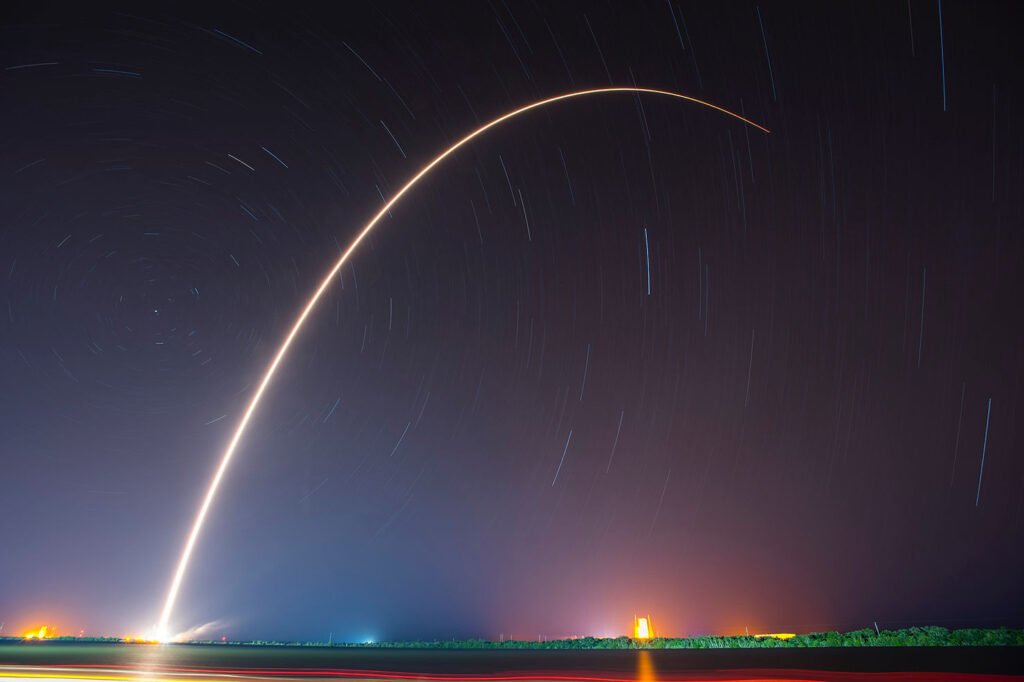On April 24, at the European Spaceport in French Guiana, a major milestone in European spaceflight was achieved with the successful qualification firing of the P160C solid rocket motor. Conducted at the BEAP (Banc d’Essai des Accélérateurs à Poudre) facility operated by the French space agency CNES, this test paves the way for significant performance upgrades to Europe’s Ariane 6 and Vega launch vehicles.
The P160C, developed through a collaboration between ArianeGroup and Avio within their 50/50 joint venture Europropulsion, builds on the heritage of the P120C motor. Managed and funded by the European Space Agency (ESA), the program aims to enhance the payload capabilities and overall competitiveness of Europe’s launcher fleet. The P160C stands as one of the largest solid-propellant rocket motors crafted from a single piece of carbon fiber.
A key evolution from its predecessor, the P160C is one meter longer than the P120C and carries an additional 14 tonnes of solid propellant. This increase in fuel load directly translates to greater thrust and improved performance, while maintaining compatibility with the existing interface structures of the Ariane 6 core stage. To support these advancements, industrial production upgrades are being implemented at ArianeGroup, Avio, and across their supply chain, ensuring a smooth transition alongside ongoing P120C production for upcoming missions.
Vega and Vega-C: Pillars of European Space Access
Vega and its upgraded version, Vega-C, are lightweight launch vehicles designed to deliver small to medium-sized payloads into a variety of orbits. Vega, first launched in 2012, can carry up to 1.5 tonnes to a 700 km polar orbit, making it ideal for Earth observation missions and scientific satellites. Vega-C, introduced in 2022, features upgraded stages, including the P120C first stage shared with Ariane 6, and offers a significantly increased payload capacity of up to 2.3 tonnes. These launchers are crucial for ensuring Europe’s independent access to space, particularly in the fast-growing market for smaller satellites. They provide flexibility, reliability, and competitiveness, supporting strategic initiatives such as Copernicus, Earth observation, and commercial missions, all of which are essential for Europe’s technological leadership and economic growth in space.
The European Space Agency (ESA) plays a central role in Europe’s space ambitions, coordinating projects that enhance Europe’s autonomy and innovation in space access. By overseeing programs like the P160C development, ESA ensures that European launch systems remain competitive on the global stage. ESA’s investment in next-generation technologies not only supports scientific exploration and satellite deployment but also strengthens Europe’s strategic position in the growing global space economy.
The P160C is composed of three principal components:
- The Composite Motor Casing: Manufactured by Avio in Colleferro, near Rome, the casing is constructed through filament winding and automated lay-up of carbon/epoxy pre-preg fibers, ensuring lightweight strength.
- The Nozzle Assembly: Produced at ArianeGroup’s Le Haillan facility near Bordeaux, this vital part is also built from advanced composite materials. It withstands the extreme temperatures of over 3000°C during firing, channeling exhaust gases at high velocity to generate thrust. The nozzle is designed to pivot, allowing in-flight directional control of the rocket.
- The Igniter System: Built by Nammo in Raufoss, Norway under Avio’s responsibility, the composite-aluminum igniter is crucial for initiating the motor burn.
Final integration and propellant loading are handled at Europropulsion and Regulus facilities in French Guiana, both joint ventures between ArianeGroup and Avio.
The success of this qualification test comes just four years after the P120C motor entered service, having powered the first flights of Ariane 6 and Vega-C. Now, with the P160C, Europe is preparing to enter a new phase of launcher capability, ensuring greater flexibility and performance for future space missions.



